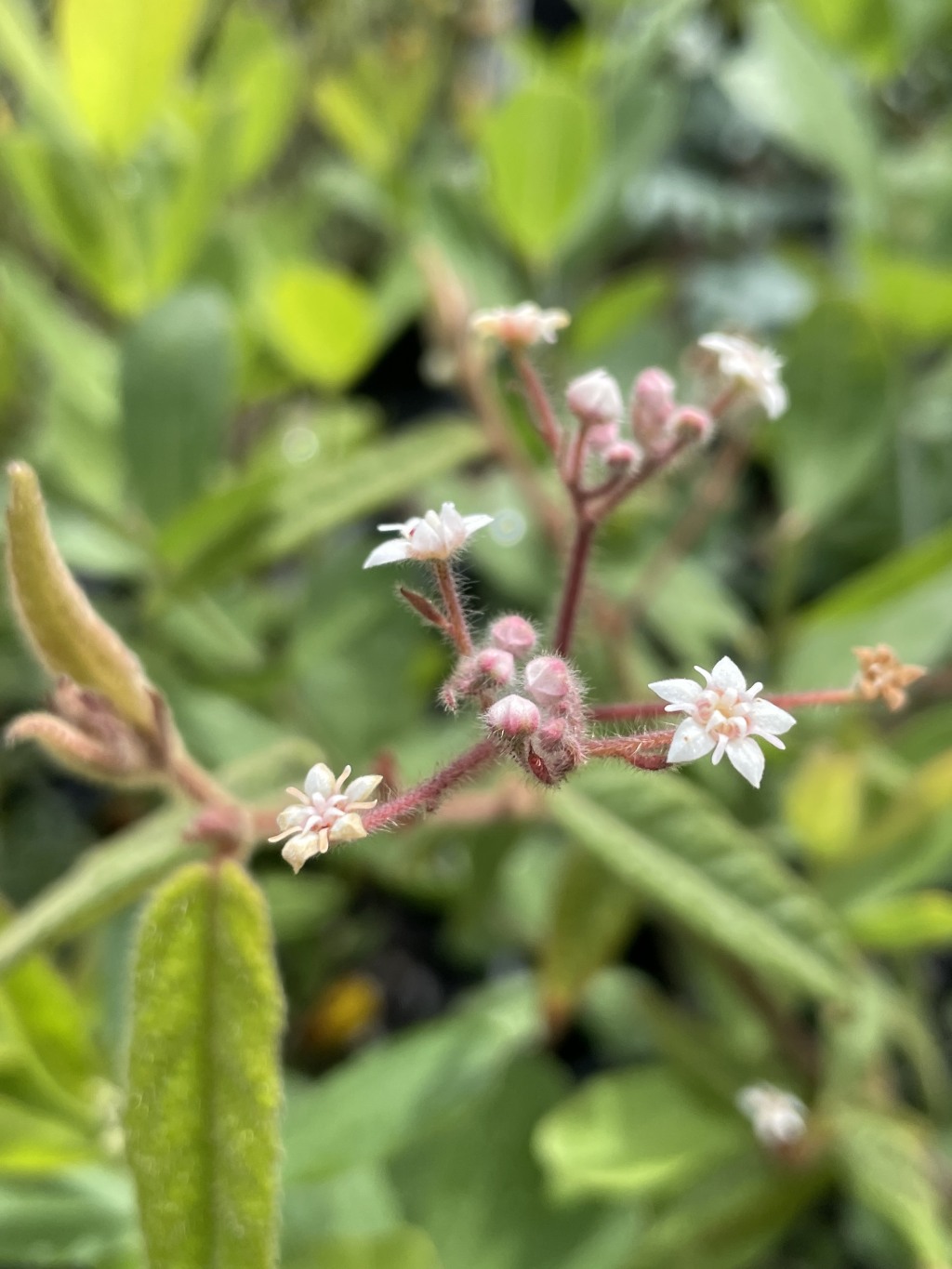Commersonia dasyphylla
Andr.Shrub to c. 3 m high. Leaves ovate, 1–5 cm long, 0.5–1.5 cm wide, regularly toothed, upper surface green, sparsely stellate-hairy, undersurface grey or greenish-white, stellate-tomentose, all hairs the same length; petioles 2–5 mm long. Inflorescence usually with 10 or more flowers. Calyx segments 3–5.5 mm long, 1.5–3.5 mm wide, stellate-hairy on both surfaces; petals c. half as long as calyx segments, often somewhat stellate-hairy; anther filaments glabrous; staminodes 5, stellate-hairy. Capsule 5–12 mm diam., sparse-moderate stellate hairy; setae 2.1–4.7 mm long, present throughout fruit surface; shaft of setae with glandular trichomes to 0.2 mm long, sometimes with scattered branched or simple eglandular hairs to 0.7 mm long; apex of setae with strongly reflexed hairs to 2.5 mm long. Flowers Sep.–Jan.
EGU, VAlp. Qld, NSW, Vic. A rare species (possibly dependent on fire for germination) in dry open-forest near Murrindal in the east of the state, with an apparent disjunct occurrence on Mt Buffalo (but not reported from there since its collection in 1853).
Smaller-leaved plants from near Genoa Peak are now regarded as a separate species, C. breviseta. Aboriginal people in New South Wales are known to have used the fibrous bark for making string.
Short, P.S. (1996). Sterculiaceae. In: Walsh, N.G.; Entwisle, T.J., Flora of Victoria Vol. 3, Dicotyledons Winteraceae to Myrtaceae, pp. 324–331. Inkata Press, Melbourne.
 Spinning
SpinningSynonyms
Wilkins, C.F.; Whitlock, B.A (2011). A revision of Commersonia including Rulingia (Malvaceae s.l. or Byttneriaceae). *Australian Systematic Botany * 24(5): 226–283.

